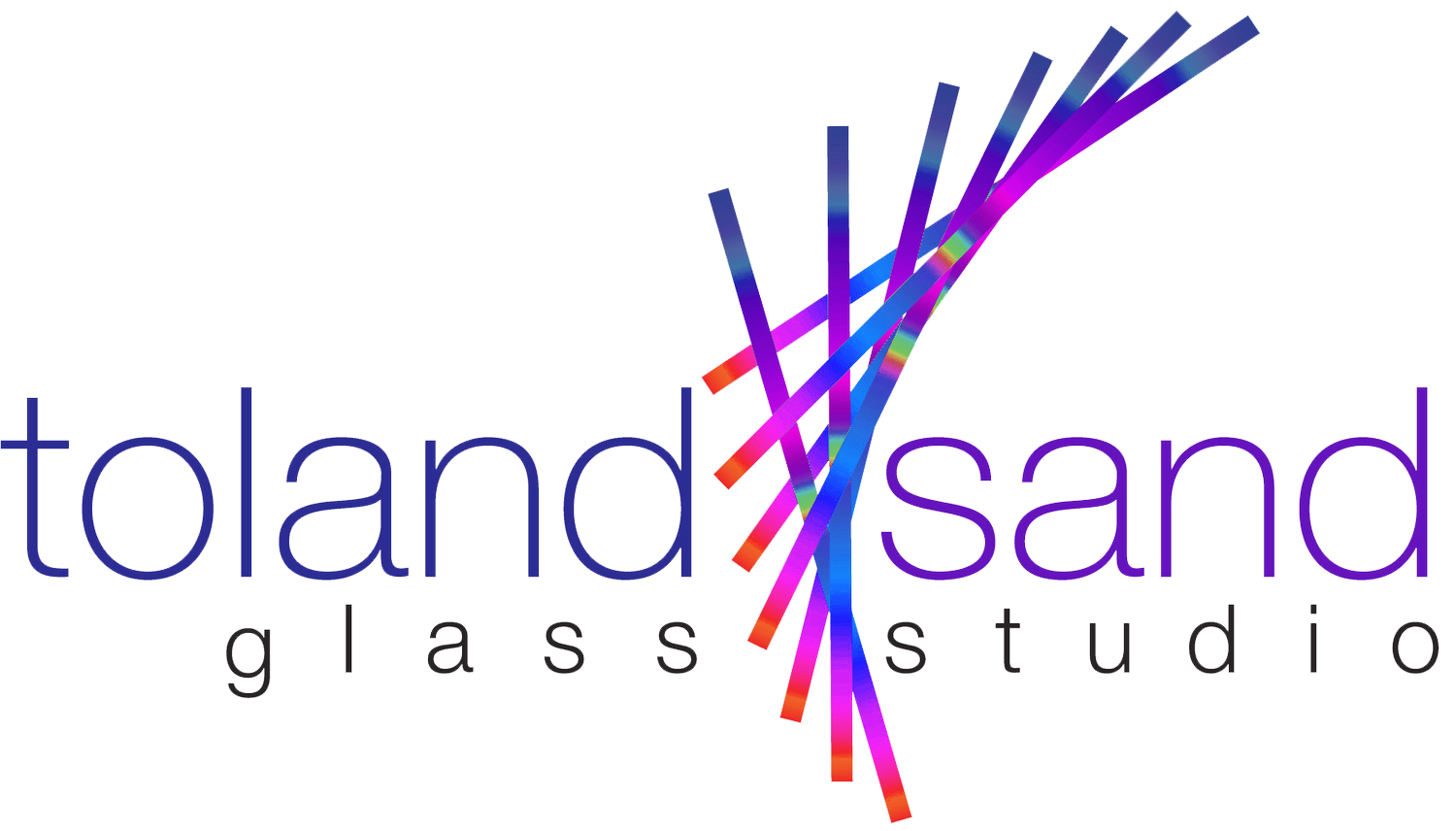A Fortunate Beginning
Toland's career in glass began in 1976 when a friend decided to move on from a small stained glass business. From there it grew and evolved from craft fairs to art galleries. In these images you can see the progression of the craft and the evolution of Toland's personal style. There have been 4 fairly clear stages of Toland's art beginning with the craft focussed stained glass work and evolving through to the current visual language. The stained glass evolved from including some blown glass elements to a few years of exclusively blown glass work before giving way to architectural pieces which combined elements of the stained glass aesthetic with the beginnings of the sculptural elements which for the basis for Toland's artistic career.
Stained Glass Work, 1977 to 1983
Initially I made geometric sun catchers and quickly progress into making 24" free hanging panels with wood frames. I would use blown glass rondells that were blown for me. I started making my own when I opened by hot shop in 1981. My palette was to try to use glasses with related colors in an effort to keep it simple and elegant. I completed a number of commissions and my last one was a multi window large installation. From there I switched to blowing vessels.
Blown Glass Work, 1984 to 1986
Glass blowing was an incredible adventure for me. The heat, the immediacy, the plasticity.... all were very engaging. When I built my current studio in 1984 I had Chris Heilmann, a glassblowing then residing in Maine, to build some equipment for me. I basically taught myself, with Chris' help, to blow roundels and vessels, which I marketed through the League of New Hampshire Craftsmen and the ACC fair in Baltimore. I settled on some pod shapes, which I would break right off the pipe and then grind an angled top into. Around that I cut stencils by hand and sandblasted designs that encircled the top. This led me to want to create architectural sandblasted panels and freestanding sculptures.
Architectural Glass Work, 1986 to 1988
I was fascinated with the idea of freestanding pieces as sculpture. I had made some with stained glass. Now for another challenge. The process led me to one large installation in Manchester, New Hampshire, one a light wall that was once the end of an alley between two buildings. Using rectilinear design on one side and freeform design on the other created a combination of the two which was quite dynamic. To create colored focus points in the design I would use UV glue to glue on pieces of dichroic glass and small round colored pieces. The gluing took on a life of it's own and led me to create three dimension sections using dichroic glass. In 1986 I was one of the first to use dichroic glass in glass sculpture. It continues to this day.
Cold Worked Glass, 1989 to present
Using adhesives in my architectural work led me to start gluing up multiple layers of window glass, including a wire glass that is used in fire breaks. Looking for more clarity in the glass, I switched to water clear optical crystal and began using optical epoxies to adhere everything together. Pretty soon it was construct, cut apart, polish, and reassemble, over and over, creating optical fields and wonderful complexity. In terms of shape, the sky was the limit. Off I went, and am still to this day exploring what can be done and where I want to take it according to my own artistic sensibilities.
